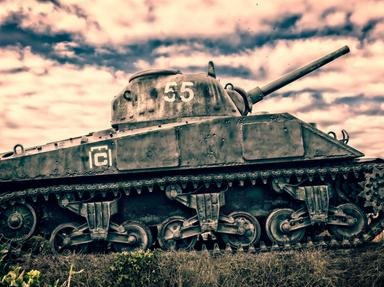Quiz Answer Key and Fun Facts
1. Which aspect of the Tiger I identifies it as a continuation of German pre-war tank design?
2. Which of these vehicles was armed with the 20mm Flak Vierling?
3. Which of the following vehicles is NOT based on the PzKpfW IV chassis?
4. Which of these vehicles was based on the PzKpfW VI Ausf. E (Tiger I) chassis?
5. Which vehicle was known as "Guderian's Ente" (Guderian's duck)?
6. What does "SdKfz", in relation to German armor, mean?
7. Read carefully: What was Germany's most produced, fully tracked, AFV during WWII?
8. The Marder I was NOT built on which French chassis?
9. The Panzerjäger I was one of Germany's first self-propelled guns in WWII, which makes sense as the PzKpfW I, on which chassis it was based, was basically obsolete as the war began. But which gun was mounted in the vehicle?
10. I will again finish with the same vehicle with which I started. The first combat deployment of the Tiger I was when and where?
Source: Author
Leuber
This quiz was reviewed by FunTrivia editor
ponycargirl before going online.
Any errors found in FunTrivia content are routinely corrected through our feedback system.
